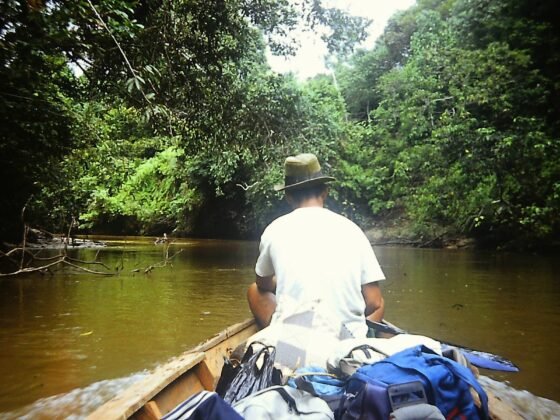Biking is one of the most rewarding and eco-friendly ways to explore a new destination. Whether you’re cycling through scenic countryside routes, bustling city streets, or rugged mountain trails, biking offers an intimate connection with your surroundings. However, just like any mode of transportation, safety should always be a top priority. As a traveler, you may be unfamiliar with local roads, traffic rules, or even the terrain. Here are essential bike safety tips for travelers to help you enjoy your ride and stay safe.
Choose the Right Bike
Not all bikes are created equal, and the one you choose should match the terrain and purpose of your journey. City bikes are great for urban areas with flat roads, while mountain bikes are better for off-road adventures. If you’re renting a bike, make sure it’s the right size for your height and body type. Riding a bike that’s too small or too large can make controlling the bike more difficult and uncomfortable.
Additionally, inspect the bike for any issues before setting off. Check that the brakes work properly, the tires are inflated, and there are no loose parts. A well-maintained bike is key to preventing injuries on the road.
Wear Proper Safety Gear
One of the simplest yet most crucial safety measures is wearing a helmet. Experienced injury attorneys in Atlanta suggest helmets can significantly reduce the risk of head injury in case of an accident. Be sure to choose a helmet that fits properly and is certified for safety standards in the region you’re visiting.
In addition to a helmet, consider wearing bright or reflective clothing, especially if you’re biking in low light or at night. This makes you more visible to drivers and other cyclists. Gloves, padded shorts, and protective eyewear can also enhance your comfort and safety during long rides.
Familiarize Yourself with Local Traffic Laws
Traffic laws for cyclists vary widely depending on where you are. In some countries, cyclists must ride on the right side of the road, while in others, the left side is the norm. Some regions require cyclists to follow the same rules as cars, including stopping at traffic lights and yielding to pedestrians, while others have specific lanes or paths dedicated to bikes.
Before hitting the road, research local cycling regulations. Many destinations have bike rental shops or tourism centers that provide useful information about where it’s safe to ride and what rules to follow. Knowing the law can prevent accidents and help you avoid fines.
Plan Your Route
Whether you’re navigating a bustling city or rural countryside, planning your route in advance is essential for safety. Avoid heavily trafficked roads if possible, and opt for bike-friendly routes, such as dedicated bike lanes, parks, or quiet side streets. Many cities now offer bike-sharing services and have maps highlighting the safest biking areas.
Additionally, using navigation apps can help you stay on course and alert you to any potential hazards, such as steep hills or construction zones. If you’re unfamiliar with the area, try riding with a local guide or joining a group bike tour for added safety.
Stay Alert and Avoid Distractions
Cycling in a new environment requires heightened awareness of your surroundings. It’s easy to get distracted by the beauty of the scenery, but you must remain focused on the road. Always keep an eye out for obstacles such as potholes, pedestrians, or parked cars that could open their doors into your path.
Avoid using headphones or looking at your phone while biking. If you need to check your map or make a call, stop in a safe spot before continuing your ride. Staying alert and attentive can help you react quickly to any unexpected situations.
Use Hand Signals and Communicate with Others
Hand signals are a universal way to communicate your intentions to drivers and fellow cyclists. Before making a turn or changing lanes, signal your direction with your arm to alert others. This helps prevent collisions and ensures that everyone on the road knows your next move.
When approaching pedestrians or slower cyclists, use a bell or your voice to let them know you’re passing. Being courteous and predictable on the road improves safety for everyone.
Stay Hydrated and Take Breaks
Biking can be physically demanding, especially in unfamiliar or challenging environments. It’s important to stay hydrated, particularly if you’re biking in a hot or humid climate. Carry a water bottle with you and take regular breaks to rest and refuel. This can prevent fatigue, which can impair your ability to make quick decisions and react to road hazards.
Be Prepared for Emergencies
Even with the best precautions, bike accidents can happen. Always carry a small repair kit with essentials like a tire pump, spare tube, and multi-tool in case you need to fix a flat or make adjustments. It’s also a good idea to have a first aid kit and know basic first aid procedures in case of minor injuries.
Additionally, make sure you have local emergency contact numbers saved on your phone, as well as the location of nearby bike shops or repair stations.
Ride with Confidence, but Caution
Lastly, confidence plays a big role in bike safety. Hesitant or erratic riding can confuse drivers and other cyclists, increasing the risk of accidents. Ride with confidence, maintaining a steady speed and clear direction. However, always err on the side of caution and give yourself enough space to react to changing traffic conditions or obstacles.
Biking while traveling in a new place is an exciting way to explore new destinations, but it requires careful attention to safety. By choosing the right bike, wearing appropriate gear, understanding local traffic laws, and staying alert on the road, you can enjoy your cycling adventure while minimizing the risk of accidents.
Photo by Kay Liedl on Unsplash












